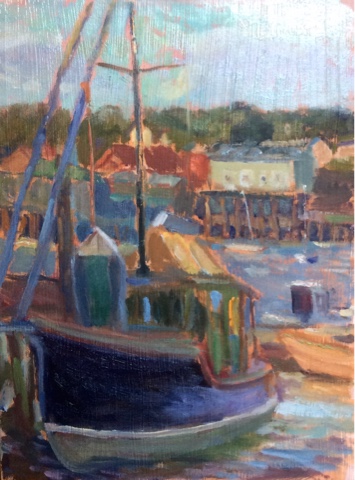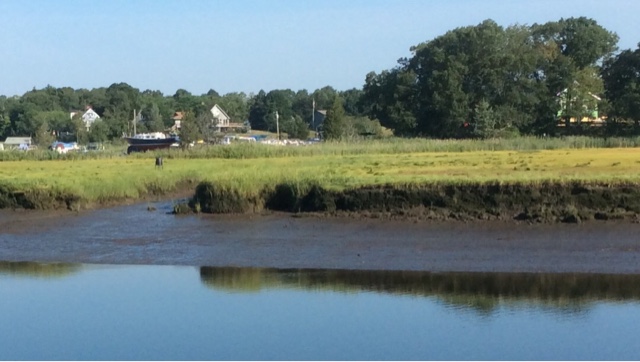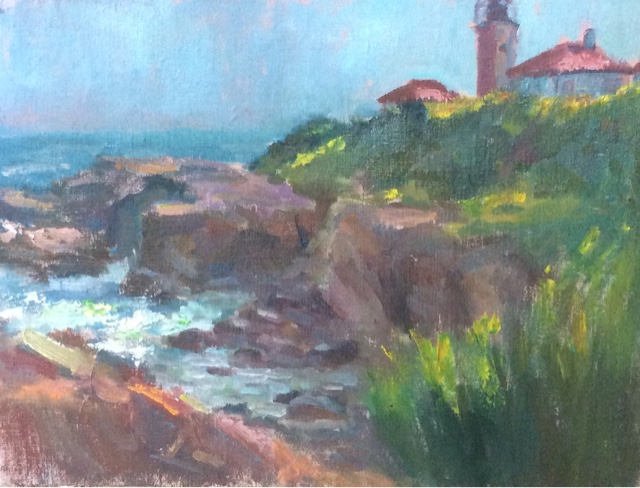The oil sketch above, rough and unfinished as it is, was begun at Rocky Neck, famous for its artist colony, in Gloucester. This old boat has been painted many times by many very good painters, but I find it an ever-fresh subject, particularly at low tide when it sits in a purplish muddy shore. The boat rests in a shadow cast by a nearby building and the waning light of early evening falls gently on the Gloucester harbor background. The painting was a side benefit of travel to Essex to participate in the Essex Paint Out. (Unfortunately, I do not have photos of the two paintings that went up for auction -- and are now gone to happy homes!). Here are some shots of the area:
The area becomes almost a tidal flat during low tide, the mud and its sky reflections becoming both a challenge and a joy to paint. Other exciting painting areas include the surrounding salt marsh.
Before leaving for this weekend event ( Essex Paint Out and auction), I did manage to get some local practice:








